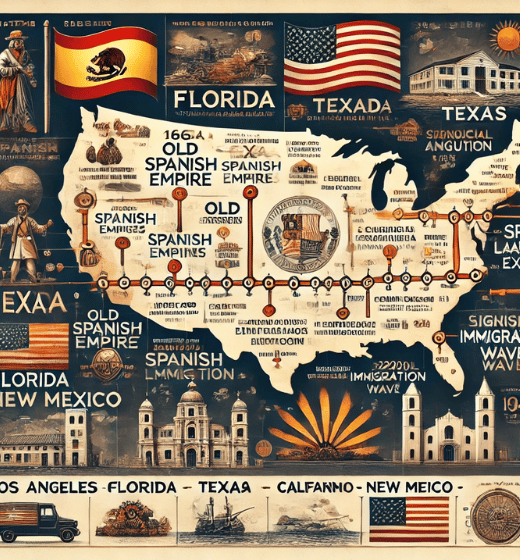

The U.S. is a melting pot of cultures, and language plays a significant role in that diversity. Over the years, one key question has emerged: When will Spanish overtake English in America?
With over 41 million people speaking Spanish, it has become the most spoken language after English in the country.
Even though English is still used in schools, government, and business, the Hispanic population is growing fast, making up almost 20% of the country.
In this article, we’ll look at how Spanish is growing and what this could mean for the future.
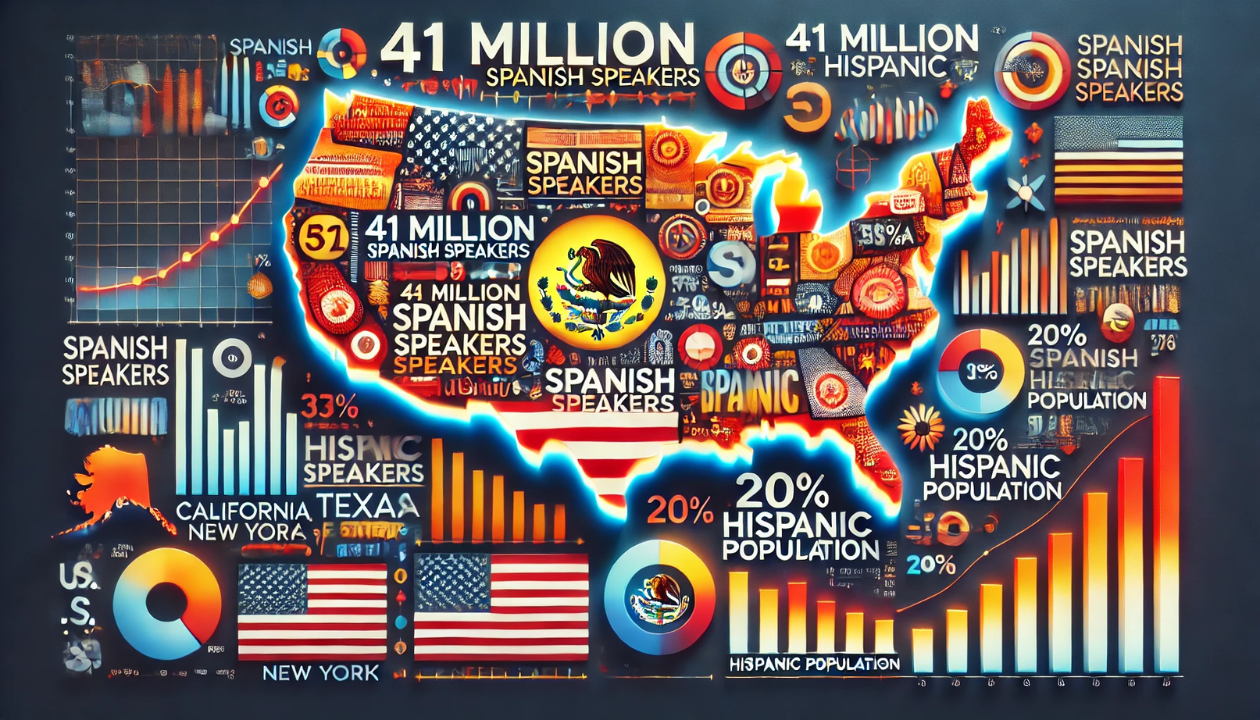
Historical Context: The Growth of Spanish in the U.S.
Spanish has a long history in the U.S., going back to the 16th century when Spanish explorers arrived. Areas like Florida, Texas, California, and New Mexico were once part of the Spanish Empire, which left a strong cultural and language influence. By the time these places became part of the U.S., Spanish was already a common language.
The real boom in the Spanish-speaking population came in the 20th century, thanks to immigration from Mexico, Central America, and other Latin American countries. Cities like Los Angeles, Miami, and New York became centers for Spanish speakers.
Today, Spanish is the second most spoken language in the U.S., with millions using it daily, especially in states like California and Texas. The growing bilingual Hispanic population keeps Spanish a key part of American culture.
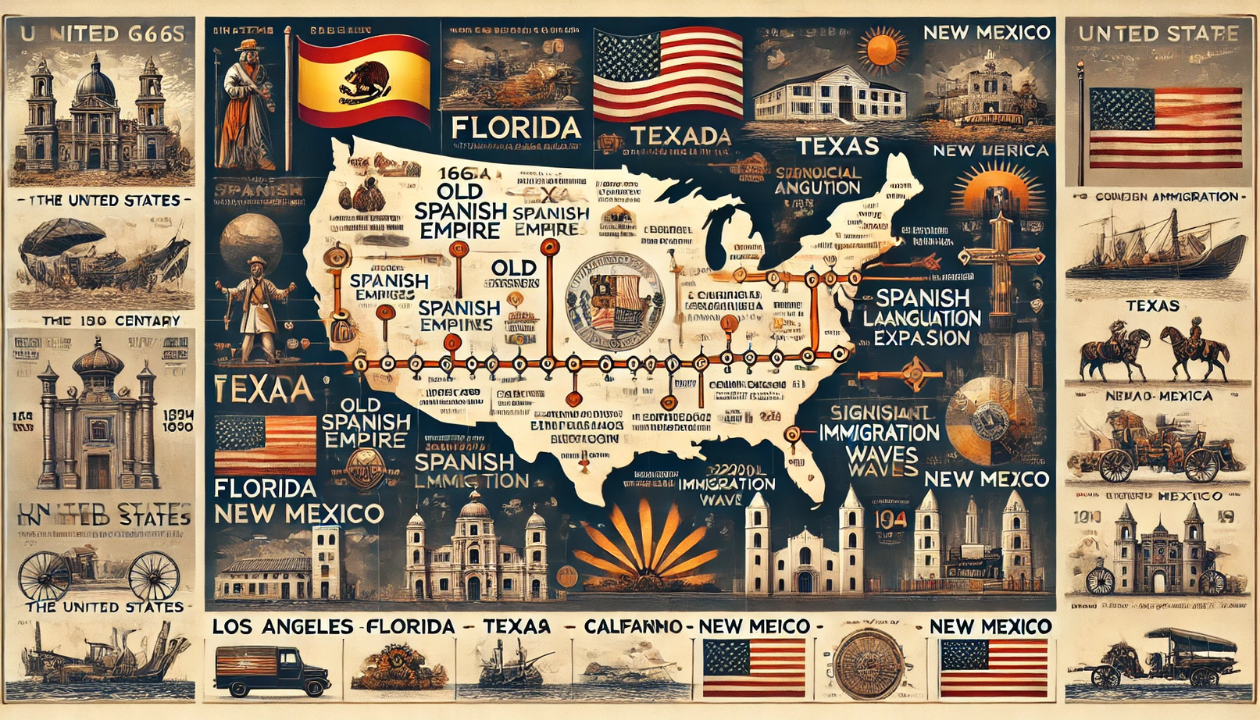
The Role of the Hispanic Population in Shaping Language Dynamics
The rapid growth of the Hispanic population is reshaping how languages are spoken in the U.S. According to the United States Census Bureau, over 62 million people of Hispanic descent live in the U.S., making up almost 20% of the total population. This growth has had a major impact on the use of Spanish across the country.
In states like California, Texas, Florida, Arizona, and New Mexico, Spanish is widely spoken and heard in everyday life. It’s common to hear Spanish in public spaces, from stores to schools, and even at political rallies. Many businesses now serve Spanish-speaking customers, recognizing the growing importance of Spanish in the United States.
At the same time, bilingual households are becoming more common. Many second, third, and even fourth-generation Hispanic Americans grow up fully bilingual, speaking both English and Spanish. For some families, especially those wanting to maintain their cultural roots, speaking Spanish at home is essential. This dynamic helps Spanish remain a strong force, even among younger generations who are comfortable with both languages.
The influence of the Hispanic population isn’t just about language; it’s also political. Hispanic voters are now one of the fastest-growing ethnic groups in the U.S., and campaigns often target them in both English and Spanish. Politicians understand the importance of reaching out to Spanish speakers to connect with voters who may have limited English proficiency.
As the Hispanic population continues to grow and make its mark in different areas of society, it’s clear that Spanish will only become more prominent. Whether it’s in schools, mass media, or everyday conversations, the role of Spanish in the U.S. is here to stay.
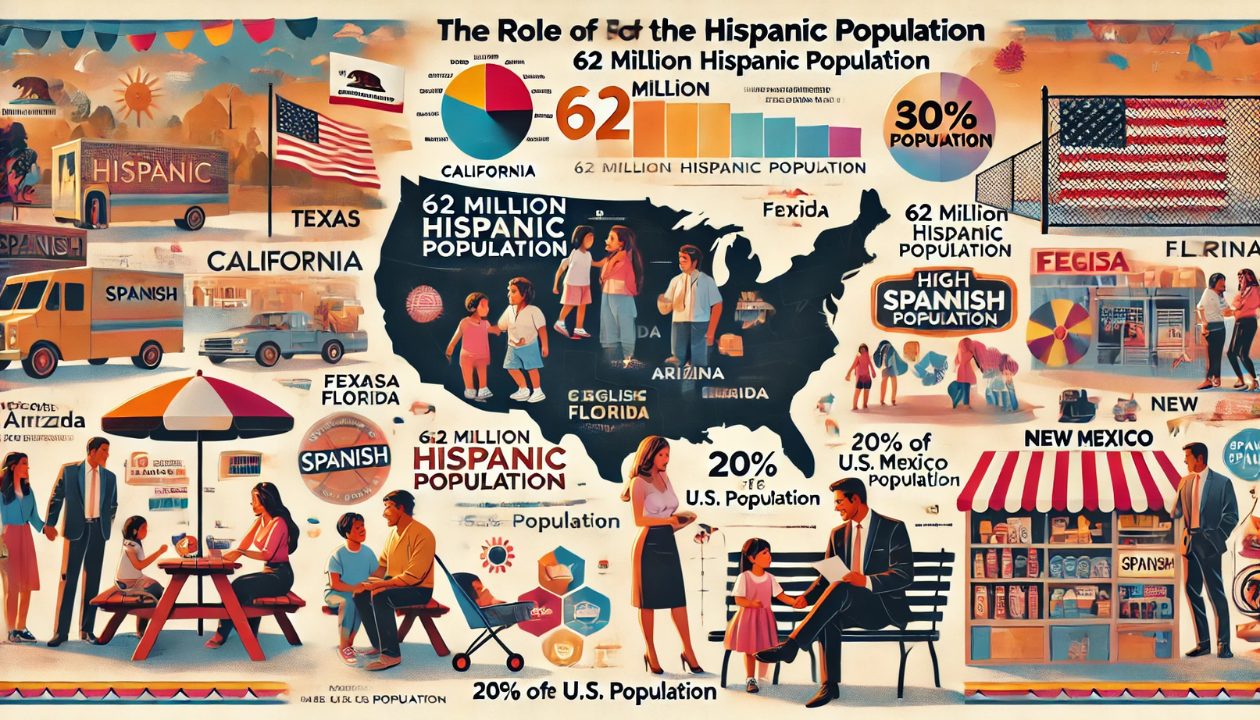
Spanish in U.S. Schools: A Bilingual Future?
Spanish is making waves in U.S. schools, reflecting its growing role in American society. Today, Spanish is the most commonly taught second language in schools, with millions of students learning it each year.
From elementary through college, Spanish programs have become a key part of the education system, giving students a chance to master one of the most widely spoken languages in the world.
In many areas, bilingual education programs are popping up to serve Spanish-speaking students. These programs teach in both English and Spanish, helping students maintain their first language while also becoming fluent in English.

States like California and Texas, where many children speak Spanish at home, have embraced these programs. For Hispanic immigrants and their families, this is a great way to preserve their cultural heritage while adapting to life in the U.S.
Interestingly, it’s not just Hispanic students learning Spanish. More and more non-Hispanic students are signing up for Spanish classes, recognizing how valuable it is in the job market. Industries like healthcare, education, and customer service see a high demand for workers who can speak both English and Spanish. In fact, being fully English-Spanish bilingual is becoming a sought-after skill.
This rise of Spanish in U.S. schools points to a future where bilingualism could be the norm. As younger generations grow up learning both languages, we’ll likely see even more cultural understanding and communication between communities. It also helps ensure that Spanish, one of the major Romance languages, remains a vibrant part of the U.S. landscape.
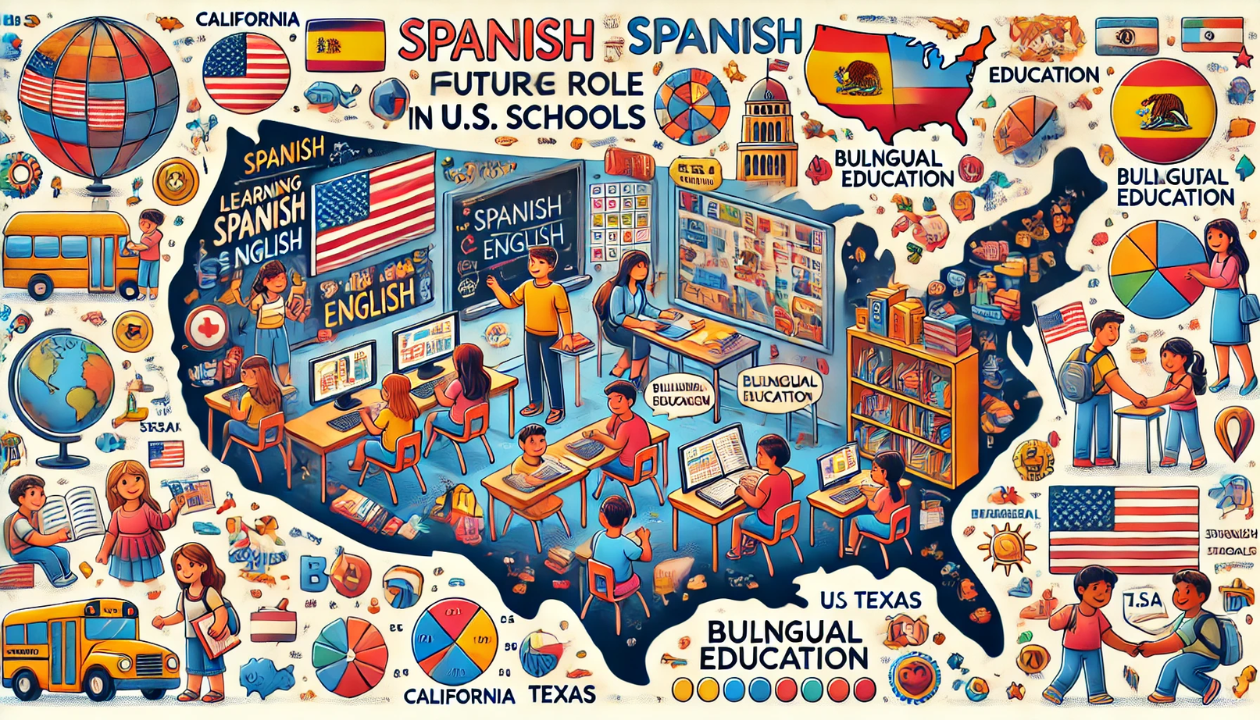
Media, Entertainment, and Pop Culture
Spanish is not only thriving in schools and communities; it’s also making a major impact on U.S. media and entertainment. Networks like Univision and Telemundo, which cater to native Spanish speakers, have become household names. From news and sports to popular telenovelas, these Spanish language mass media outlets are no longer just niche—they are mainstream, attracting millions of viewers nationwide.
The influence of Hispanic culture on U.S. pop culture is also hard to miss. Latin music has exploded in popularity, with artists like Bad Bunny, Shakira, and J Balvin making waves globally. Their music, which often features Mexican Spanish and other regional variations, has gained fans well beyond the Spanish-speaking world. Even those who don’t speak Spanish are drawn to the energy and rhythm of Latin music.
In addition to music, Spanish is becoming more visible in advertising. Companies are increasingly using bilingual strategies to reach the growing number of Spanish speakers in the U.S. Whether on billboards or in commercials, it’s common to see ads in both English and Spanish, especially in areas where Hispanic communities make up a large portion of the population.
This increased presence of Spanish in media and pop culture reflects the language’s growing influence on American life. With Spanish spoken by millions and more people exposed to it through TV, music, and ads, Spanish will continue to play a bigger role in shaping U.S. culture.
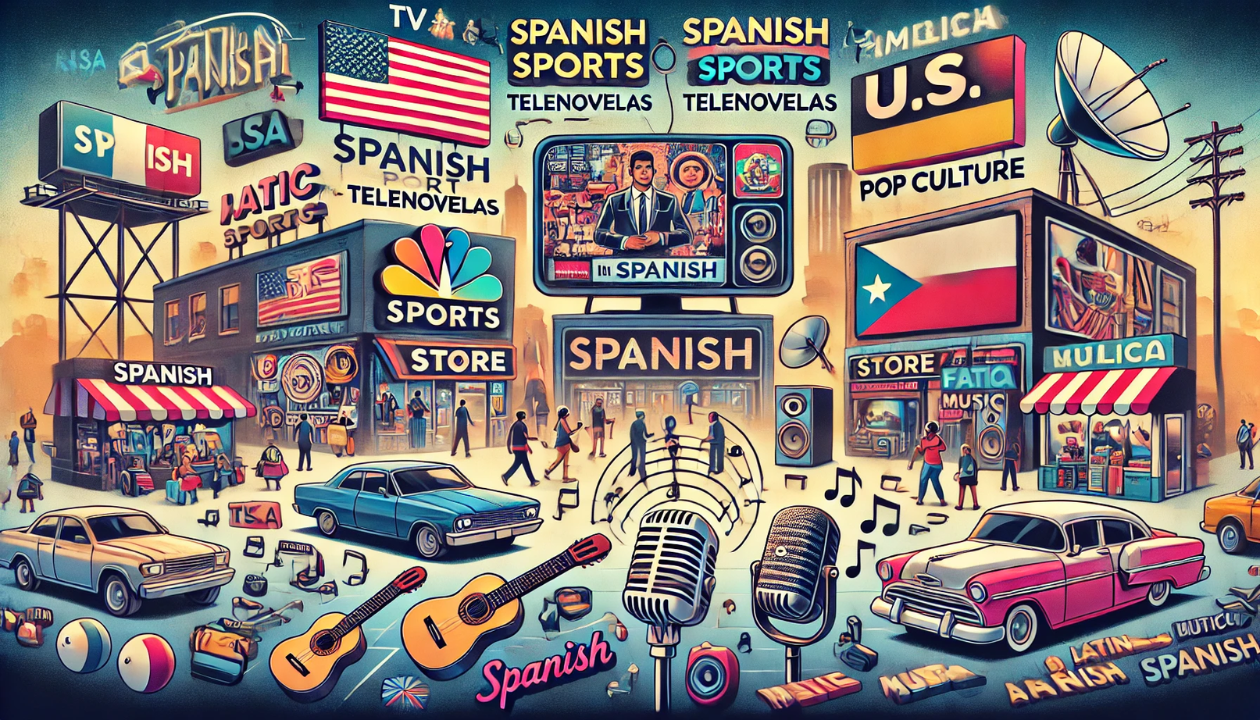
The Economic Power of Spanish in the U.S.
The rise of Spanish in the U.S. is having a big impact on the economy. Hispanic consumers, with a buying power of over $1.9 trillion, are a key demographic in sectors like retail, healthcare, and entertainment, making Spanish-speaking customers highly attractive to businesses.
Many companies are now creating bilingual marketing campaigns to connect with this market. From grocery stores to banks, offering services in both English and Spanish has become essential, especially near the Mexican border and in areas with large Puerto Rican communities. These businesses understand the importance of reaching the Spanish diaspora and Spanish-speaking customers.
The demand for bilingual employees, particularly those who speak Spanish, has also grown. Businesses in fields like healthcare and retail see Spanish fluency as a valuable skill that helps enhance customer service. This trend reflects the influence of earlier immigrant languages, like when Italian immigrants helped make Italian a part of daily life in some communities.
As third and fourth generations of Hispanic Americans continue maintaining Spanish, the language will keep its economic value. Spanish in the U.S. is more than just a foreign language—it’s an asset driving business success across the country.
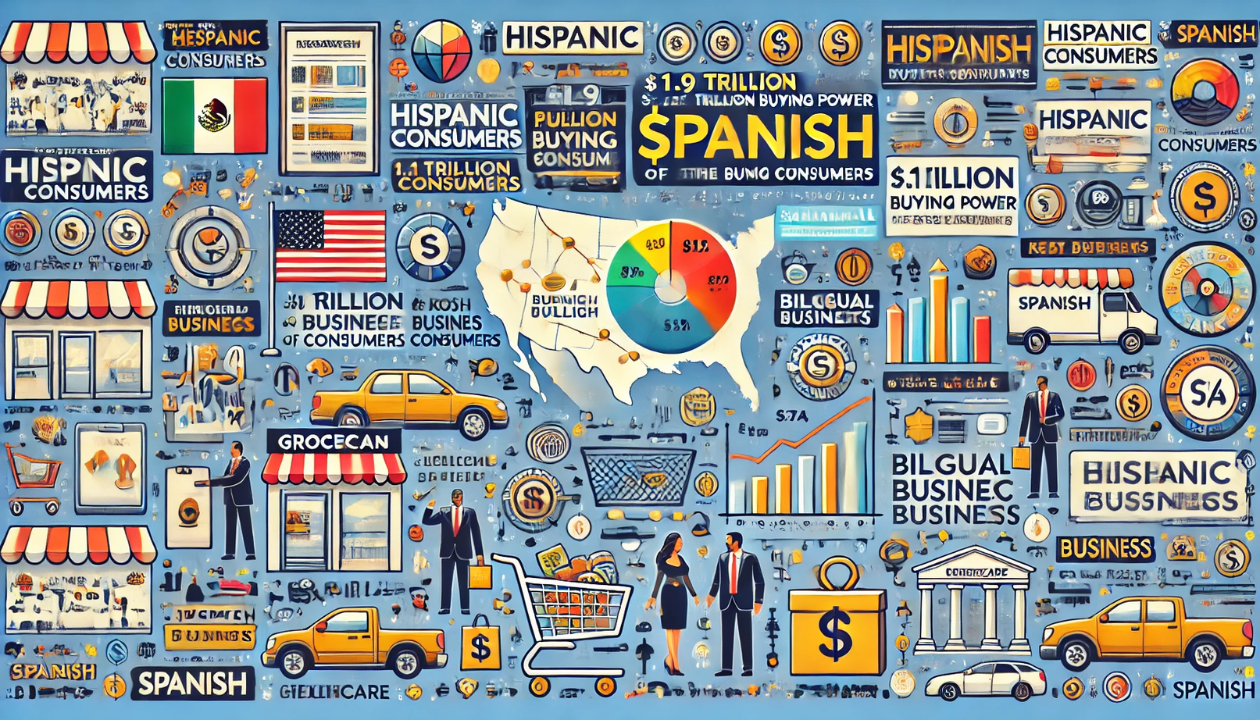
Challenges and Barriers to Spanish Becoming Dominant
Despite the growing presence of Spanish in the U.S., there are several challenges preventing it from overtaking English as the dominant language. English has long been the official language for governance, education, and business.
Government documents, legal proceedings, and most educational materials are in English, and it’s the primary language used in workplaces across the country.
While bilingualism is increasing, the dominance of the English language in formal institutions remains strong. For Spanish to replace English, a major shift in language use across society would be required. This would mean changes in language policies, education, and cultural attitudes toward the use of other languages.
Many second and third-generation Hispanic Americans also focus on learning English for better social and economic opportunities. Although Spanish is still an important part of their cultural identity, English is often seen as the key to success. As a result, younger generations may not be as fluent in Spanish as their older relatives, reinforcing English as the primary language.
Additionally, some people resist the idea of language change. English is deeply tied to American identity, and many view it as essential to maintaining the country’s cultural fabric. Efforts to promote bilingualism or expand the use of American Spanish in public life often face pushback from those concerned that it could weaken the primacy of English.
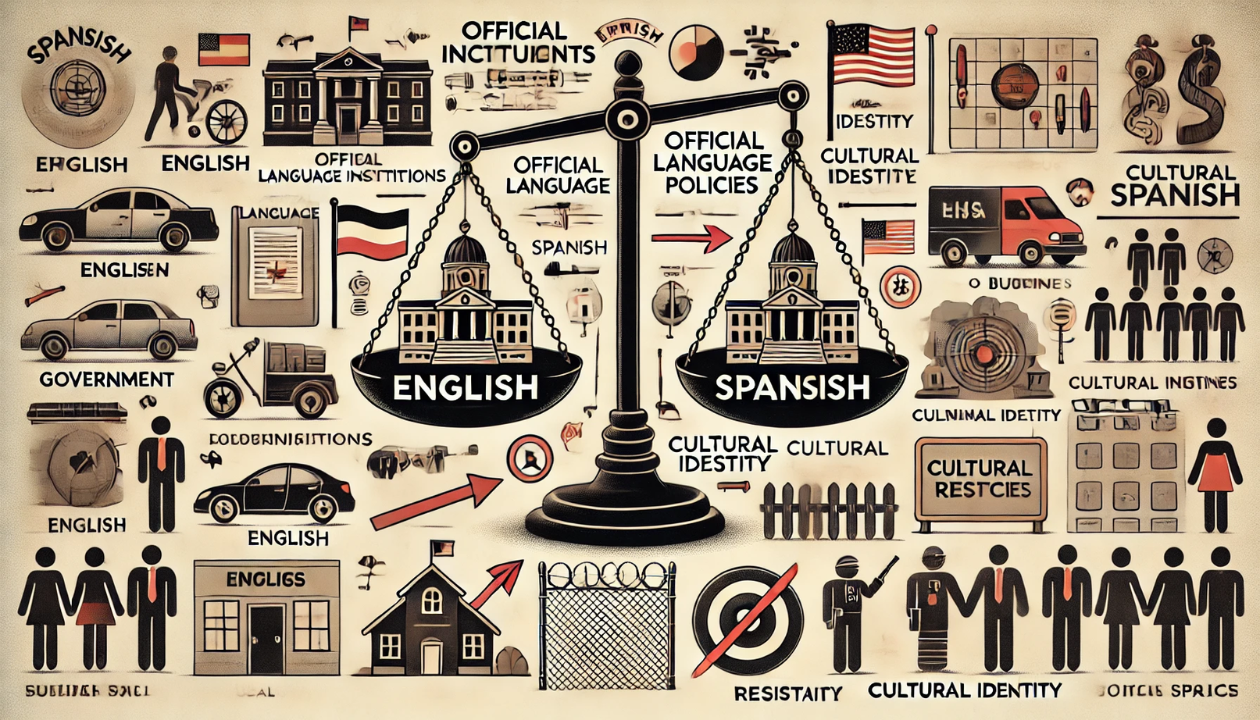
A More Likely Scenario: Bilingualism vs. Overtaking
Given the challenges Spanish faces, a more likely outcome than overtaking English is the rise of widespread bilingualism. Many Hispanic Americans, especially those in bilingual households, already speak both English and Spanish. This trend is likely to continue, with younger generations embracing bilingualism to maintain their cultural roots while thriving in broader American society.
Countries like Canada and Belgium show how bilingualism can work in modern societies, where multiple widely spoken languages coexist. A similar situation could emerge in the U.S., especially in regions like Santa Fe and along the Mexican border, where Spanish is spoken daily. In these areas, both English and Spanish could become second nature, with people switching between them as needed.
The benefits of a bilingual society are clear. Bilingualism helps improve cognitive abilities, fosters cross-cultural understanding and opens doors for communication in a globalized world. In this scenario, Spanish in the U.S. would continue to grow as an important language but would complement English rather than compete with it.
In the end, both languages would thrive. Spanish would remain a valuable linguistic and cultural asset for millions of Americans, and bilingualism could shape a more multilingual and diverse society where Spanish, like other languages, plays a central role in daily life.

Global Perspectives: English as a Lingua Franca vs. Regional Language Trends
Globally, English remains the dominant language for international business, science, and diplomacy. As the world’s lingua franca, English’s influence extends far beyond U.S. borders, making it unlikely that Spanish will surpass it within the country. Many English-speaking Americans, like Anglo-English speakers, rely on this global status in various fields.
However, regional language trends show that Spanish can still thrive without overtaking English. In Latin America, Spanish is the primary language, yet English is widely taught and used in business. Similarly, Spanish in the U.S. continues to grow, especially in regions like Santa Fe and areas influenced by the Mexican-American War, but it coexists with English.
Ultimately, while English will continue as the dominant language in the U.S., Spanish will remain a widely spoken language, influencing culture and society without replacing English. Both languages will maintain their unique roles, with many Americans learning Spanish as a second language.
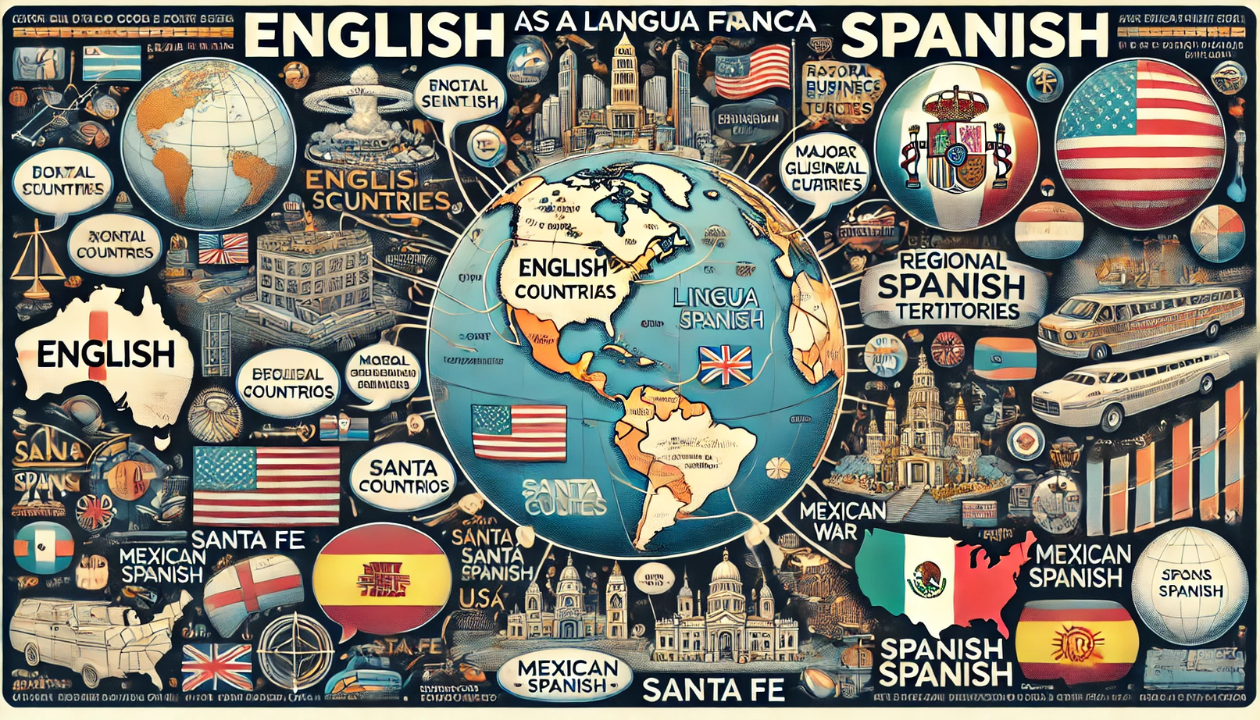
Conclusion
In conclusion, while Spanish is experiencing significant growth in the U.S. and is becoming an increasingly important part of the cultural and linguistic landscape, it is unlikely to overtake English as the dominant language. English remains the primary language of governance, education, and business, and its global influence reinforces its status in the U.S.
However, the rise of bilingualism offers a more likely and promising future. As younger generations grow up speaking both English and Spanish, the U.S. could become a more bilingual society, where both languages coexist and complement each other. This would allow Spanish to continue growing in prominence without threatening the dominance of English.
Ultimately, Spanish will continue to thrive in the U.S., particularly in regions with large Hispanic populations and in areas such as media, education, and business. While it may not overtake English, its cultural and economic power ensures that Spanish will remain a vital part of American society for years to come.

FAQs
How many people will speak Spanish in the U.S. by 2050?
Projections vary, but estimates range from 138 million to 132.8 million Spanish speakers in the U.S. by 2050117.
What is the future of the Spanish language in the U.S.?
Spanish is expected to remain a strong second language, with continued growth due to immigration and the natural population increase of Hispanic communities1114.
Will America become a Spanish-speaking country?
While Spanish use will increase, the U.S. is not expected to become primarily Spanish-speaking. English will likely remain the dominant language1114.
Is Spanish growing or declining in the U.S.?
Spanish is growing in terms of total speakers, but the percentage of Hispanics who speak Spanish at home is declining slightly1415.
Will Spanish become a global language?
Spanish is already considered a global language, and its influence is expected to continue growing worldwide810.
Which language will be the most spoken in America?
English is projected to remain the most spoken language in America, with Spanish maintaining its position as the second most common language114.
What percentage of the U.S. population speaks Spanish?
As of 2022, about 13.7% of the U.S. population (43.4 million people) speak Spanish at home115.
Does the U.S. have more Spanish speakers than Spain?
Yes, the U.S. has more Spanish speakers than Spain. The U.S. is the second-largest Spanish-speaking country in the world, after Mexico118.
Which country has the most Spanish speakers?
Mexico has the largest number of Spanish speakers, with approximately 121 million speakers918.
Which U.S. cities have the most Spanish speakers?
Los Angeles, New York City, Miami, Houston, and Chicago have the largest Spanish-speaking populations in the U.S.310.

